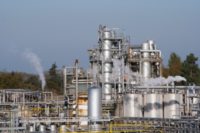As the Environmental Protection Agency (EPA) considers new chemical plant safety rules, a new national survey of likely 2016 voters shows strong support among Democrats, Republicans and Independents for policies that would eliminate catastrophic hazards.
Strong majorities across gender, age, race, partisanship, and region support new requirements to use safer chemicals and processes. Overall 79 percent of likely voters support these new requirements and only 17 percent oppose them:
- Democrats: 88 percent support, 76 percent strongly
- Independents: 77 percent support, 60 percent strongly
- Republicans: 70 percent support, 49 percent strongly
Since the deadly 2013 West, Texas fertilizer disaster 82 people have been killed and 1,600 injured in over 400 chemical plant incidents. According to facility reports to the EPA, over 100 million Americans still live in chemical hazard zones. In addition to putting facility employees at risk, communities closest to hazardous facilities are disproportionately African American and Latino.
In an October 8th letter to President Obama, leaders of the Coalition to Prevent Chemical Disasters cited the new polling results and warned the President that his August 2013 Executive Order (#13650) directing EPA and other agencies to modernize their regulations has yet to yield new safety regulations.
In their letter to the President the groups said:
“We fear that the EPA may fall far short of the prevention policies you advocated for in the Senate, and the principles your administration advanced on Capitol Hill. Primary among those principles were requirements to use safer chemical processes or inherently safer technologies (IST) where feasible.”
“It is essential that the EPA make cost-effective inherently safer technologies (IST) requirements an integral part of any revision of its Risk Management Program (RMP) to eliminate the many catastrophic hazards faced by workers and communities across the U.S.
The groups also reminded the President that cost-effective safer alternatives are widely available (eg., Washington, D.C.’s waste water treatment plant and all U.S. Clorox facilities have converted), but new requirements are needed to ensure their use.
The poll was done by Lake Research Partners on behalf of the BlueGreen Alliance, Center for Effective Government, Communications Workers of America, Greenpeace, Union of Concerned Scientists and the United Steelworkers.


